 |
 |
 |
| |
PrEP use rising in US MSM, but rectal STI rate remains stable
|
| |
| |
22nd International AIDS Conference, Amsterdam, Netherlands, July 23-27, 2018
Mark Mascolin
Use of preexposure prophylaxis (PrEP) with tenofovir/emtricitabine (Truvada) rose from 3% to 21% over the past 3 years in a US group of men who have sex with men (MSM) [1]. Although rates of condomless anal sex climbed with PrEP, numbers of rectal sexually transmitted infections (STIs) did not rise significantly.
Availability of Truvada PrEP raised concerns that MSM would abandon condoms and take other risks exposing them to STIs. But City University of New York (CUNY) researchers who conducted this study maintain that behavioral and biological risk indicators after PrEP arrived remain equivocal.
To shed more light on these issues, CUNY investigators performed within-person analyses of MSM in a US observational cohort formed soon after FDA approval of Truvada PrEP. They aimed to track changes in condomless anal sex before PrEP use, during PrEP use, and after men stopped using PrEP. They also charted changes in rectal STI (gonorrhea and chlamydia) incidence over the same 3 periods.
Participants were adult US residents who identified themselves as HIV-negative, had sex with another man in the past year, and agreed to at-home self-testing for HIV and urethral and rectal chlamydia and gonorrhea.
This analysis focused on 313 men who used PrEP during at least 1 study visit. The researchers used generalized estimating equation models adjusted for race, partner status, and time to determine (1) number of condomless anal sex acts with a casual male partner, (2) number of receptive condomless anal sex acts with an HIV-positive or HIV status-unknown partner, and (3) probability of a rectal STI diagnosis.
About 75% of participating MSM were white, about two thirds had a full-time job, and about half were in a relationship with another men. At baseline and follow-up months 12, 24, and 36, the proportion of men using PrEP climbed from 3% to 8% to 14% to 21%. At the same 4 points, proportions who previously used PrEP were 0%, 2%, 3%, and 5%.
Average number of condomless anal sex acts rose significantly from 2.79 before PrEP use to 7.13 during PrEP use (P < 0.001) then fell to 2.09 after men stopped using PrEP (P < 0.001). Average number of receptive condomless anal sex acts with an HIV-discordant partner jumped from 0.185 before PrEP use to 0.944 during PrEP use (P = 0.001) then dropped to 0.121 after men stopped using PrEP (P = 0.001). Probability of a rectal STI inched up nonsignificantly from 0.07 before PrEP use to 0.10 during PrEP use (P = 0.22) then fell significantly to 0.02 after men stopped using PrEP (P < 0.001).
The CUNY investigators concluded that both PrEP use and discontinuation rose in the past 3 years among these US MSM. Although condomless anal sex acts did rise during PrEP use, number of rectal STI infections remained stable. And after men stopped using PrEP, all forms of sexual risk studied fell below levels reported before they started PrEP.
The researchers proposed that "PrEP appears to be serving its exact purpose for those MSM who use it--uptake occurs during times of higher (potential) risk behavior and [PrEP] is discontinued once that risk subsides." They speculated that previous studies using only 1 pre-PrEP measure and 1 post-PrEP measure "may have inflated estimates of the risk of PrEP for STIs [because of potential spikes in risk immediately after initiation that may subsequently begin to decrease." The investigators argued that the HIV-preventing benefit of PrEP "seems far greater than the potential for slight increases in STI incidence."
Reference
1. Parsons J, Rendina HJ, Whitfield T, Grov C. Changes in rectal STI incidence and behavioral HIV risk before, during, and after PrEP in a national sample of gay and bisexual men in the United States. AIDS 2018: 22nd International AIDS Conference, Amsterdam, Netherlands, July 23-27, 2018. Abstract TUAC0202.
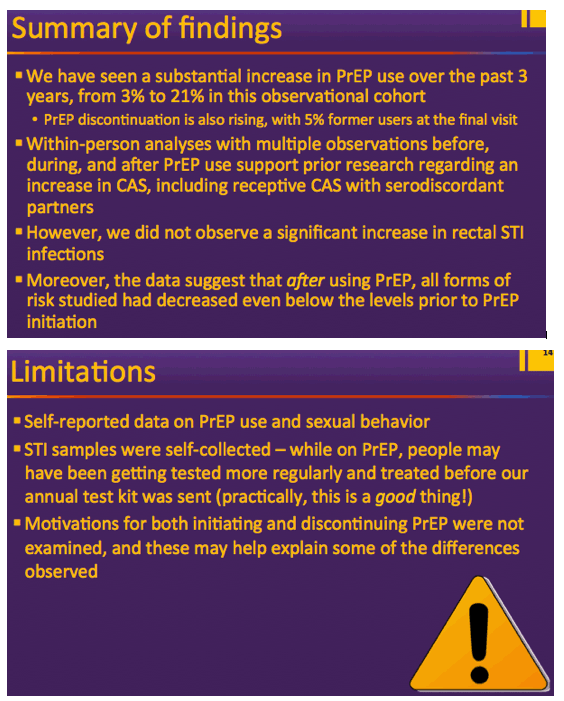
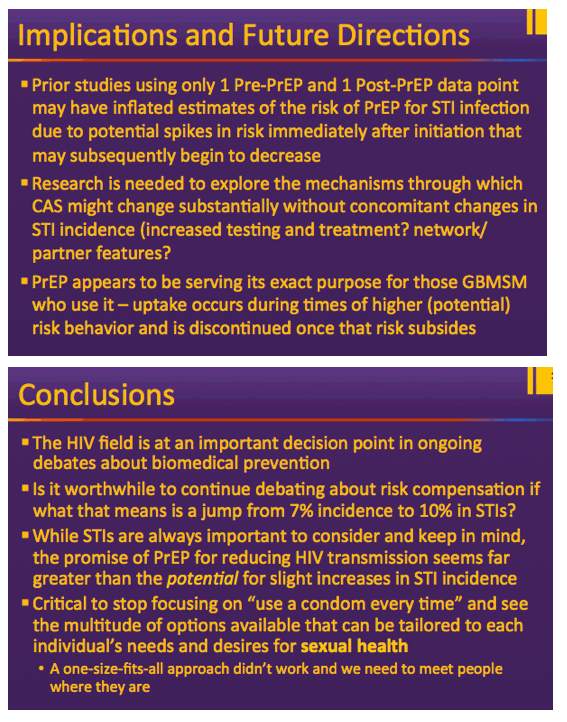
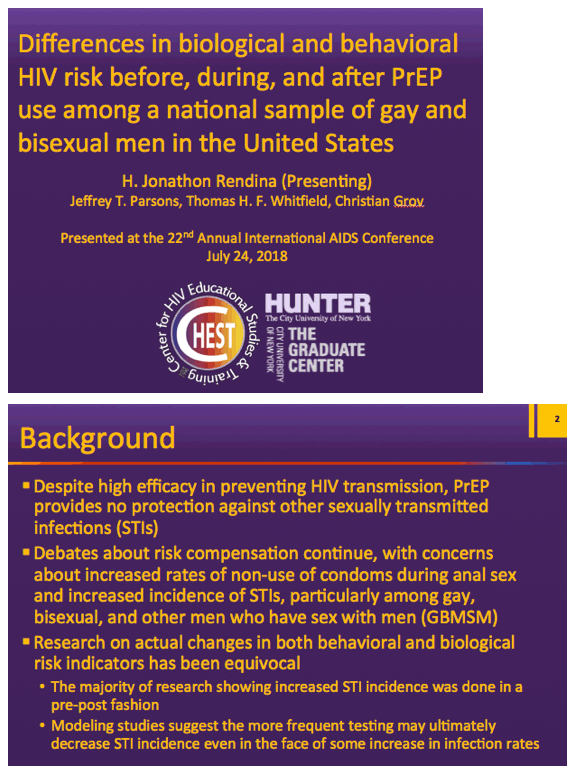
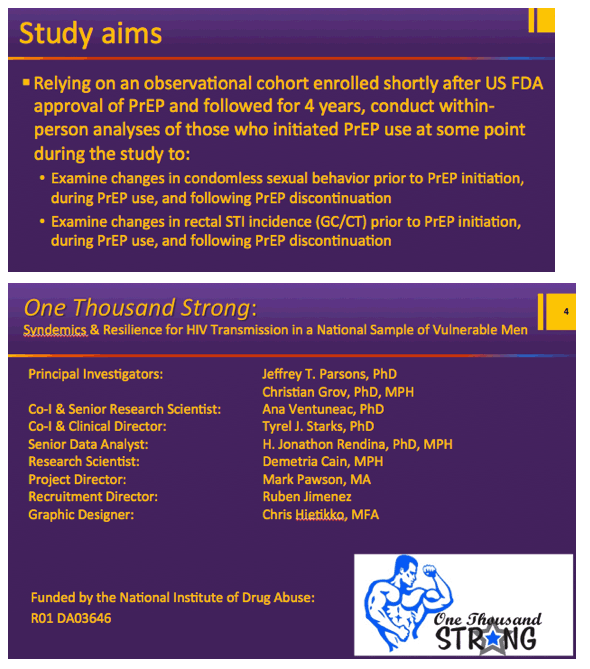
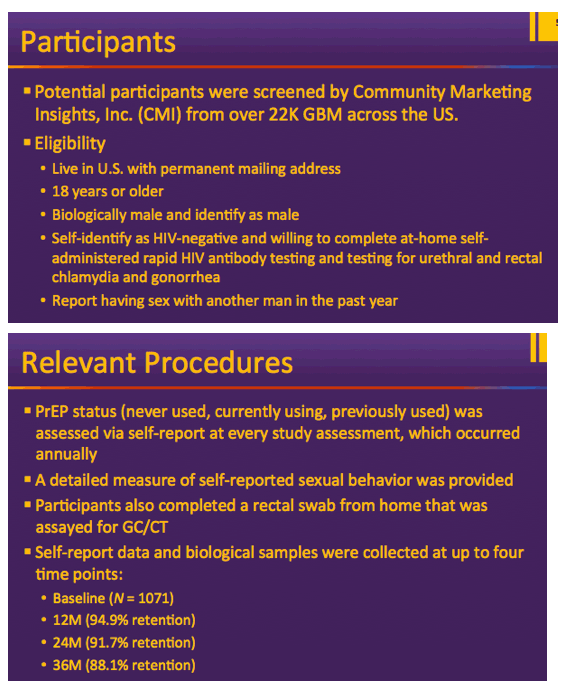

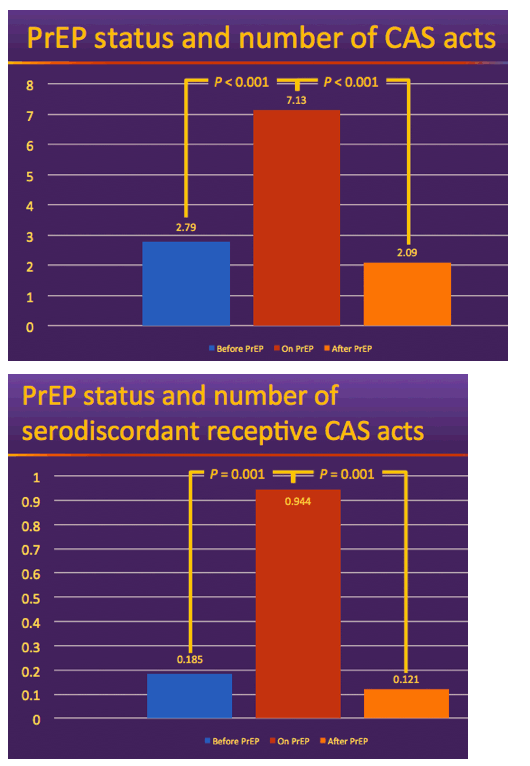
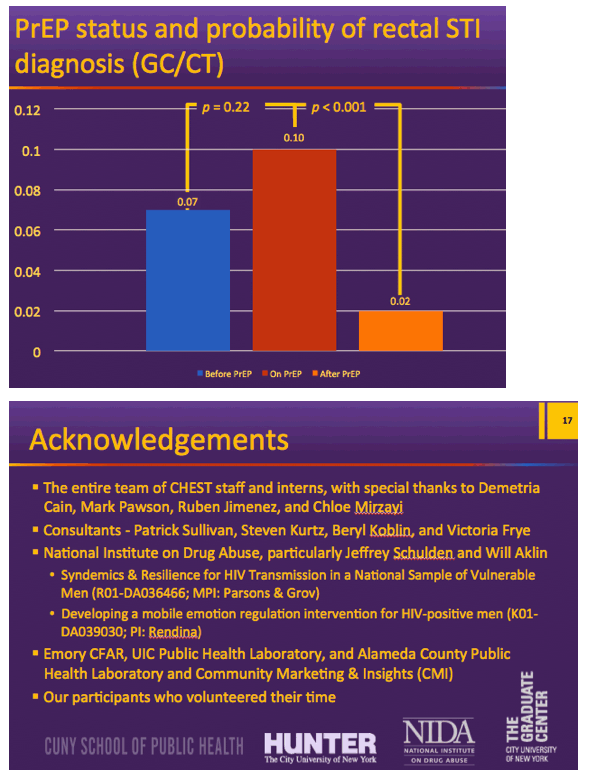
|
| |
|
 |
 |
|
|